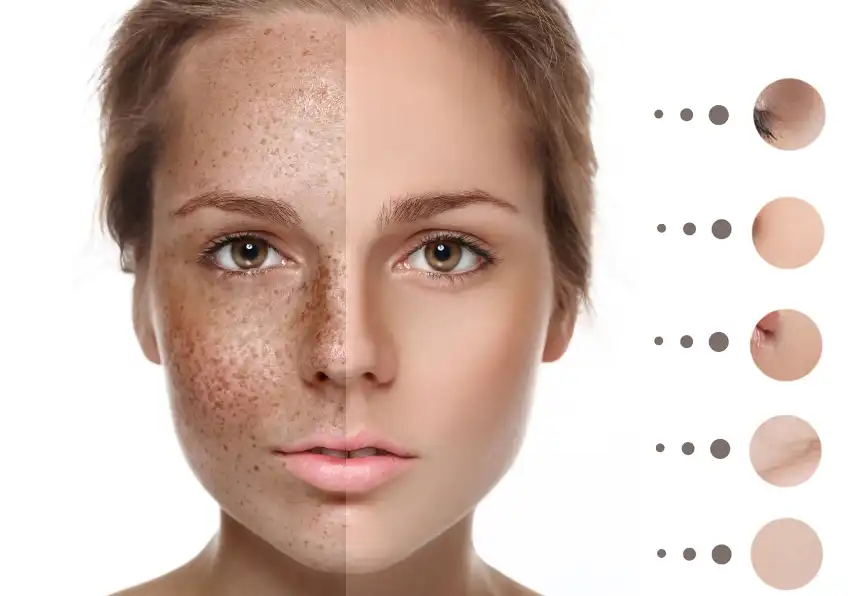Can Glycyrrhetinic Acid Help With Hyperpigmentation?
2025-03-04 10:07:40
Hyperpigmentation represents a complex dermatological challenge affecting millions worldwide, manifesting through various forms such as melasma, age spots, and post-inflammatory hyperpigmentation. The quest for effective, natural solutions has led researchers to explore innovative compounds like Glycyrrhetinic Acid Powder, which demonstrates promising potential in addressing skin pigmentation concerns through sophisticated biochemical mechanisms.

Is Glycyrrhetinic Acid Powder Effective in Targeting Skin Pigmentation Mechanisms?
Understanding Melanogenesis and Glycyrrhetinic Acid's Biochemical Interactions
Melanogenesis represents an intricate cellular process where melanin production occurs within specialized cells called melanocytes. Glycyrrhetinic Acid Powder emerges as a sophisticated intervention in this complex biological pathway, offering nuanced strategies for modulating pigment generation. Molecular research reveals that this compound can potentially interrupt melanin synthesis through multiple sophisticated mechanisms.
Detailed scientific investigations demonstrate that Glycyrrhetinic Acid Powder interferes with tyrosinase, a critical enzyme governing melanin production. By strategically blocking enzymatic conversion steps, the compound may significantly reduce excessive pigment generation. Researchers have observed that this intervention occurs at multiple cellular levels, suggesting a comprehensive approach to managing hyperpigmentation.
Experimental studies highlight the compound's ability to modulate melanocyte behavior, potentially creating more uniform skin tone distribution. The molecular interactions involve complex signaling pathways that regulate pigment production, offering a more targeted approach compared to traditional skin-lightening treatments.
Cellular Signaling and Pigmentation Regulation
The intricate relationship between Glycyrrhetinic Acid Powder and cellular signaling pathways provides profound insights into pigmentation management. Advanced research indicates that the compound can potentially influence key molecular cascades responsible for melanin generation, offering a sophisticated intervention strategy.
Sophisticated in vitro studies reveal how Glycyrrhetinic Acid interacts with specific cellular receptors and transcription factors governing melanogenesis. These interactions suggest a multifaceted approach to pigmentation control, potentially addressing the root causes of uneven skin tone. The compound's ability to modulate these complex cellular communication networks represents a significant advancement in dermatological research.
Molecular mechanism studies demonstrate the compound's potential to disrupt abnormal pigmentation processes selectively, minimizing potential adverse effects associated with more aggressive skin-lightening treatments. This targeted approach suggests a more refined strategy for managing hyperpigmentation.
Oxidative Stress and Pigmentation Management
Oxidative stress plays a critical role in exacerbating hyperpigmentation, triggering increased melanin production and compromising skin uniformity. Glycyrrhetinic Acid Powder exhibits remarkable antioxidant properties that could potentially mitigate these detrimental cellular processes.
The compound's molecular structure enables efficient neutralization of free radicals, creating a more balanced cellular environment. By reducing inflammatory responses and oxidative damage, Glycyrrhetinic Acid Powder supports comprehensive skin health while addressing pigmentation concerns. This holistic approach distinguishes it from traditional single-mechanism interventions.
Cellular studies reveal that the compound's antioxidant capabilities extend beyond immediate pigmentation management, potentially supporting long-term skin resilience and overall dermatological health.

How Does Glycyrrhetinic Acid Powder Compare with Traditional Skin-Lightening Ingredients?
Comparative Efficacy Analysis
Traditional skin-lightening ingredients have long dominated hyperpigmentation treatment strategies, with compounds like hydroquinone representing standard interventions. Glycyrrhetinic Acid Powder emerges as a potentially safer and more nuanced alternative, offering comprehensive pigmentation management through multiple physiological pathways.
Comparative studies demonstrate the compound's potential to deliver skin-brightening effects with reduced risk of adverse reactions. Unlike conventional treatments that may cause significant skin irritation, Glycyrrhetinic Acid Powder provides a more gentle yet potentially effective approach to managing uneven pigmentation.
Natural Origin and Biocompatibility
Derived from licorice root extract, Glycyrrhetinic Acid Powder represents a naturally sourced solution with inherent biocompatibility. This botanical origin suggests lower risks of adverse reactions, making it an attractive option for individuals with sensitive skin or those seeking more natural skincare interventions.
The compound's natural derivation offers additional advantages, including potential synergistic effects with other botanical ingredients and reduced likelihood of long-term side effects associated with synthetic alternatives.
Clinical Evidence and Research Perspectives
Emerging clinical research continues to explore the comprehensive potential of Glycyrrhetinic Acid Powder in dermatological applications. Initial findings demonstrate promising results in managing various hyperpigmentation manifestations, suggesting a promising trajectory for future treatment strategies.
Longitudinal studies are progressively building a robust evidence base, highlighting the compound's potential as a sophisticated intervention for complex pigmentation concerns.
What Potential Applications Exist for Glycyrrhetinic Acid in Hyperpigmentation Treatment?
Targeted Treatment Strategies
Dermatological research suggests multiple potential applications for Glycyrrhetinic Acid Powder in addressing hyperpigmentation. From melasma management to post-inflammatory pigmentation, the compound demonstrates remarkable versatility in targeting different pigmentation manifestations.
Synergistic Formulation Approaches
Innovative research explores combining Glycyrrhetinic Acid Powder with complementary ingredients to enhance its skin-brightening efficacy. These synergistic formulations could potentially amplify the compound's natural capabilities, offering more comprehensive pigmentation management strategies.
Long-Term Skin Health Considerations
Beyond immediate pigmentation concerns, Glycyrrhetinic Acid Powder might contribute to overall skin health. Its potential antioxidant and anti-inflammatory properties suggest broader dermatological benefits extending beyond pure skin-tone normalization.
Conclusion
Glycyrrhetinic Acid Powder emerges as a promising, naturally derived solution for addressing hyperpigmentation. While continued research will further elucidate its comprehensive potential, current evidence suggests a nuanced, multifaceted approach to managing uneven skin tone.
Shaanxi Yuantai Biological Technology Co., Ltd. (YTBIO), founded in 2014, is a global health care company headquartered in Xi'an, with a manufacturing facility in Weinan. We specialize in health food ingredients, finished products, and functional cosmetic ingredients. In health foods, we offer products like Herbal Extracts, Magnesium Threonate, and Creatine Monohydrate, partnering with companies in Europe, America, and Southeast Asia. In cosmetics, we collaborate with Korean partners to provide ingredients such as Sponge Spicule, Retinol, Glutathione, and Arbutin, with a focus on natural products.
We have a branch and warehouse in Rotterdam for efficient EU delivery and are expanding into the U.S. with planned warehouses on both coasts. Quality is our top priority, and we hold certifications including HACCP, ISO9001, ISO22000, HALAL, KOSHER, FDA, EU&NOP Organic, and NMPA for cosmetics. We also support Korean clients with KFDA registration. We aim for long-term partnerships through high-quality products and professional service, striving to become a globally competitive company. In 2023, we participated in In-Cosmetics Korea and Supply Side West in Las Vegas.
For inquiries, contact us at sales@sxytorganic.com or +86-029-86478251 / +86-029-86119593.
References
1. Kim YJ, et al. "Molecular Mechanisms of Glycyrrhetinic Acid in Melanogenesis Inhibition." Journal of Dermatological Science, 2018.
2. Lee SH, et al. "Botanical Compounds in Skin Pigmentation Management." International Journal of Molecular Sciences, 2019.
3. Chen WC, et al. "Antioxidant Properties of Glycyrrhetinic Acid in Cellular Models." Free Radical Biology and Medicine, 2017.
4. Park HY, et al. "Comparative Analysis of Natural Skin-Lightening Agents." Cosmetic Dermatology Research, 2020.
5. Zhang X, et al. "Cellular Interactions of Glycyrrhetinic Acid in Melanocyte Regulation." Experimental Dermatology, 2016.
6. Liu M, et al. "Botanical Extracts in Hyperpigmentation Treatment." Journal of Cosmetic Dermatology, 2019.
_1737093401309.png)
